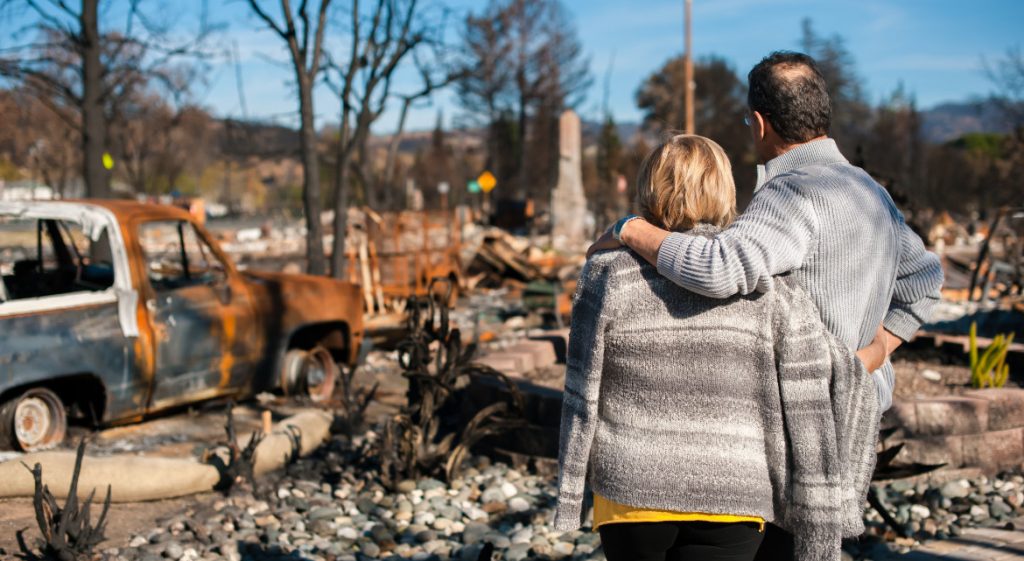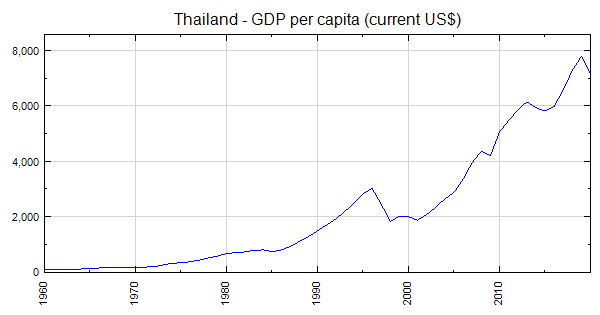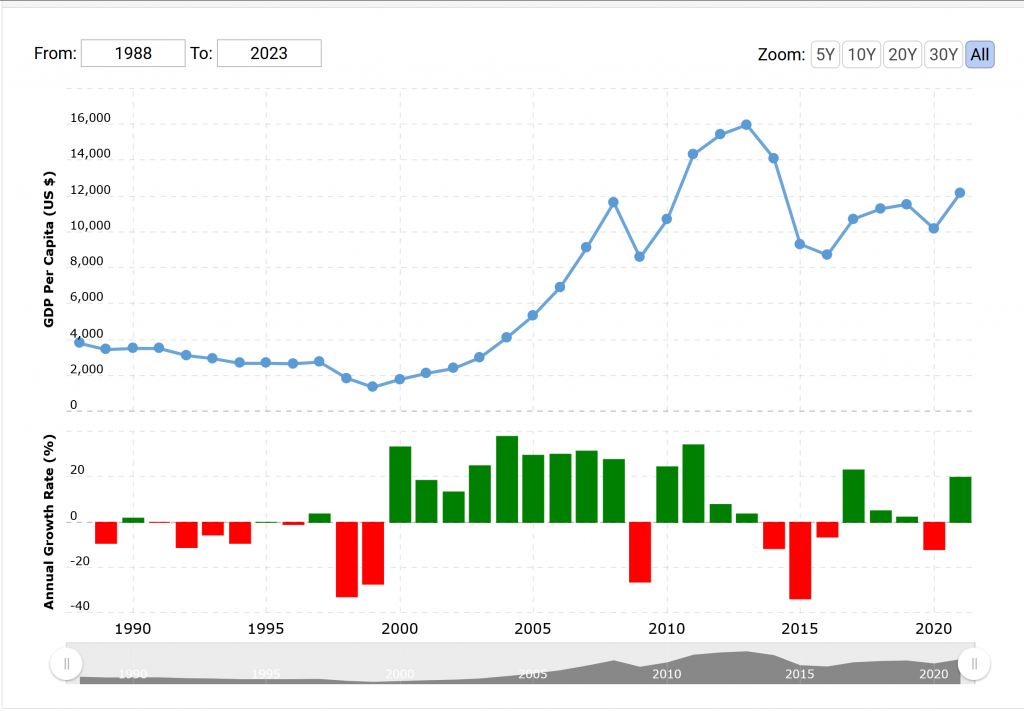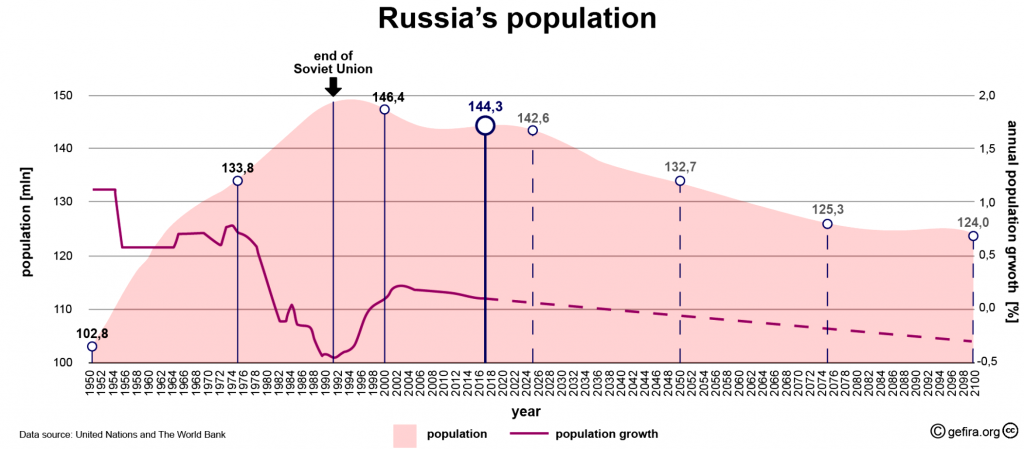Collapse is More Than a Crisis

Given the lack of action to prevent the looming collapse of industrial civilisation, it would seem that those in charge of economic policy such as politicians, economists, bankers and investors struggle to comprehend the difference between a crisis and collapse. A crisis is a temporary phenomenon and in economic and financial terms usually lasts only a few years.
A good example is the centrepiece of the Asian debt crisis in 1997, Thailand. As we can see from the graph, the crisis in hindsight looks very much like a temporary setback before growth resumes:

In contrast, Venezuela used to have a GDP per capita of US$18,000 at its highest (PPP in 2017 dollars). Venezuela stopped providing official statistics in 2014, so only estimates are available for later years. The CIA World Fact book estimates a GDP per capita of just US$7,700 for 2018. In combination with ongoing food shortages, 6 million people having left the country (20% of the population) and hyperinflation there is no doubt that Venezuela has collapsed.
The exception to the rule is probably Russia, which experienced a massive decline in GDP per capita between 1988 and 1999. Given the long timeframe of 12 years and the fact that GDP per capita declined by 2/3 over that period, it would seem to deserve the collapse label.

As you would expect with collapse, this went together with a decline in the population:

What saved Russia and reversed the collapse was a drastic change in economic policy combined with a long period of increasing and high commodity prices, which constitute Russia’s main exports.
It is probably best to think of crisis and collapse as markers on a spectrum of outcomes. A ‘blip’ recession (say a 2-quarter fall in GDP) can turn into a crisis or quickly be forgotten. A crisis is steeper and longer than a blip. It can right itself in a few years or become prolonged and turn into collapse. Collapse involves further economic decline and usually leads to a drop in population. Even collapse can be reversible, if the external conditions allow for reversal.
For example, in the 17th century there was a climate crisis in the Northern hemisphere, usually termed the Little Ice Age. A lull in sunspot activity and increased vulcanism led to a 1-2 degree decline in global temperatures. Initially this was a crisis but combined with a poor response from the elites (maintaining their consumption levels and looking to augment failed crops through conquest), it led to 70 years of increased warfare, civil uprisings and ultimately a decline in world population of around 1/3.
Because the underlying cause was temporary (albeit long-lasting, the colder climate lasted 100 years), the collapse was not permanent. Once the population had dropped between 30 and 50% in the main economic centres, the elites were forced to revert course, the warfare stopped, and the empires of the time adapted. The nation state and national sovereignty was born out of this collapse, a new invention designed to prevent religiously motivated wars and incursions into ‘foreign’ territory.
What is different this time around is that the decline in fossil fuel and mineral resources is permanent. Once accessible deposits are exhausted and recoverable reserves have been pumped, there is nothing to fall back on. Wind and solar cannot enable a global transportation network as we currently have (70% of oil is used in transportation and 80% of global trade is by ship).
We don’t even know if we will be able manufacture solar panels and wind turbines at mass scale after the coming collapse. Collapse not only leads to a loss of industry and economic activity, it also involves a loss of knowledge. There are no records on how the Mayans and Egyptians build their pyramids or how the Romans built their aqueducts. Europe entered a 800-year dark age after the collapse of the Roman Empire.
The internet is not going to survive the looming collapse. Both its massive energy footprint (around 200TWh pa) and dependence on high-tech manufacturing (foundries for chip manufacturing, massive supply chains for server assembly) mean that it has no chance of surviving in its current form. We can live without social media and streaming video, but the loss of information and knowledge currently sitting in corporate clouds is a much greater problem.
Because collapse is chaotic in nature and because self-interest drives the elite response, it is highly unlikely that we will see a tidy selection process of ‘essential professionals’ to rebuild ‘after’, a staple of disaster movies. In all likelihood seasoned professionals will be more at risk, since they a) live in cities, b) can’t feed themselves and c) tend to be older. We know from the 17th century collapse that living in cities and being older bring a higher risk of death during famine.
The focus now needs to be on mitigation and adaptation. We cannot prevent collapse, but we can take measures to cushion the fall. Identifying resilient, locally deployable technologies that will work without oil should be a core part of the mitigation project.

Peter Lanius is a physicist by training who has worked in IT, Telecoms and as an executive coach across many industries. He believes in collapsing early to avoid the rush and lives on a 20acre property in regional Australia.





